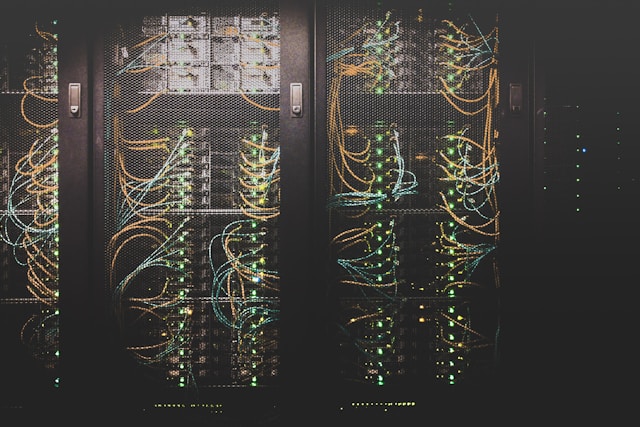Residential proxies serve as intermediaries, channeling traffic through real-world IP addresses. This ability masks user identities, allowing them to bypass geographical restrictions and enhance privacy. The MITRE ATT&CK framework, a comprehensive matrix of cyber adversary tactics and techniques, categorises the use of these proxies under technique T1090. This classification is crucial for understanding how attackers exploit proxies to maintain command and control within target networks across various platforms, including Linux, Windows, and macOS.
The significance of residential proxies in cybersecurity cannot be understated. They are a double-edged sword; on one hand, they provide essential services for anonymity and data collection. On the other, they raise ethical concerns and security vulnerabilities when misused, such as in credential stuffing and account takeovers. The MITRE ATT&CK framework's detailing of proxy use helps cybersecurity professionals develop strategies to mitigate these risks.
Understanding the role of residential proxies within the MITRE framework illuminates the complex nature of modern cyber threats. It emphasises the need for robust defenses and ethical considerations in the digital landscape, guiding professionals in navigating these challenges effectively.
From Credential Stuffing to Account Takeover and Data Exfiltration
Credential stuffing and account takeover incidents, such as the Ubiquiti breach, underscore the vulnerabilities in digital defenses. Attackers leverage residential proxies to mask their activities, aligning with the MITRE ATT&CK framework's technique T1090. This technique details the use of proxies to conduct command and control actions discreetly. In the case of Ubiquiti, adversaries utilised proxies to test and apply stolen credentials across systems without revealing their true locations, a direct application of T1090's principles.
The Camaro Dragon malware demonstrates the exploitation of residential proxies for account takeovers. By infecting devices and incorporating them into a botnet, this malware facilitated remote control over victims' accounts, aligning with MITRE's T1090 for using proxies to manage network communications. Camaro Dragon's operation reflects the tactic of maintaining anonymity while executing unauthorised access and control, a strategy documented within the MITRE framework.
Volt Typhoon's activities present a sophisticated use of residential proxies in data exfiltration. This group, known for targeting infrastructure, manipulated proxies to discreetly move data from compromised networks, a tactic that falls under MITRE's T1090. The operation showcases how adversaries use residential proxies to obscure the digital footprint of data theft, complicating traceability and detection efforts.
These examples, viewed through the MITRE ATT&CK framework, highlight the critical role of residential proxies in modern cyber threats. They emphasise the necessity for integrated defense strategies that consider the multifaceted uses of proxies in credential stuffing, account takeovers, and data exfiltration, urging cybersecurity professionals to adapt and evolve their mitigation and detection capabilities accordingly.
The Role of Residential Proxies in Web Scraping
Residential proxies have become indispensable in web scraping activities, facilitating data collection by simulating requests from various geographic locations. This capability is especially valuable in gathering data from websites that implement GeoIP restrictions or anti-scraping measures. Within the context of the MITRE ATT&CK framework, the use of residential proxies for web scraping aligns with several techniques that describe how adversaries gather information and evade detection.
Technique T1090, detailing the use of proxies, illustrates how adversaries utilise residential proxies to disguise their web scraping activities. By routing requests through proxies, they can avoid IP bans and rate limits, enabling the collection of vast amounts of data without detection. This technique underscores the strategic advantage of residential proxies in bypassing network defenses, allowing for the discreet aggregation of targeted information.
Moreover, web scraping through residential proxies also intersects with the MITRE framework's emphasis on reconnaissance techniques. Adversaries engage in reconnaissance to gather valuable data about targets, and residential proxies enhance their ability to perform this discreetly. By presenting requests as originating from different residential IPs, attackers can compile detailed profiles on organisations, their operations, and vulnerabilities without revealing their intent or location.
In the broader scope of cybersecurity, the role of residential proxies in web scraping presents a dual challenge. On one hand, it's a tool for legitimate data collection and market research. On the other, it's a technique that adversaries exploit to gather intelligence and plan further attacks. This dual nature necessitates a nuanced approach in cybersecurity defenses, balancing the need for open access to information with the imperative to protect against unauthorised data extraction.
Understanding the use of residential proxies in web scraping through the MITRE ATT&CK framework highlights the complexities of modern cybersecurity. It calls for advanced detection mechanisms that can differentiate between legitimate and malicious use of proxies, ensuring robust defense strategies that keep pace with evolving cyber threats.
Defending Against Proxy-Related Cyber Attacks Informed by MITRE
Defending against cyber attacks that leverage residential proxies requires a multifaceted approach, integrating insights from the MITRE ATT&CK framework. Technique T1090, which focuses on the use of proxies for command and control activities, provides a foundational understanding for developing defense strategies against such threats.
Network Monitoring and Analysis
A core defense mechanism is enhanced network monitoring and analysis. By scrutinising network traffic, organisations can identify unusual patterns that may indicate proxy use for malicious purposes. This involves monitoring for an excessive number of requests from varied geographic locations that do not align with normal user behavior. The MITRE framework suggests the use of network intrusion detection systems (NIDS) to detect suspicious activities, including the anomalous use of residential proxies.
Implementing Access Controls and Rate Limiting
To mitigate the risk of credential stuffing and account takeover through proxies, implementing strict access controls and rate limiting is crucial. These measures can prevent automated attacks by limiting the number of requests a user can make within a certain timeframe, thus thwarting the effectiveness of distributed attempts to breach systems via residential proxies.
Application of Web Application Firewalls (WAFs)
Web Application Firewalls (WAFs) are instrumental in defending against proxy-related attacks. Configured to recognise and block requests that exhibit patterns typical of proxy misuse, such as rapid request rates or known malicious IP addresses, WAFs serve as a barrier against unauthorised data scraping and other proxy-facilitated intrusions.
Proxy Detection and Blocking
Employing advanced proxy detection tools enables organisations to identify and block traffic coming through known residential proxies. Techniques include analyzing the originating IP addresses for known proxies and using behavior analysis to detect patterns indicative of proxy use. Once identified, these IP addresses can be blocked or subjected to additional scrutiny.
User Behavior Analytics (UBA)
User Behavior Analytics (UBA) plays a pivotal role in detecting anomalies that may signal a proxy-based attack. By establishing baselines of normal user activities, UBA systems can flag deviations that suggest malicious activities, such as multiple failed login attempts or unusual data access patterns, which are indicative of credential stuffing or data exfiltration attempts.
Educating Users on Security Hygiene
Finally, educating users on the importance of security hygiene can prevent the inadvertent participation in malicious proxy networks. Users should be aware of the risks associated with downloading unverified software or browser extensions, which could turn their devices into nodes within a residential proxy network.
Informed by the MITRE ATT&CK framework, these defense strategies underscore the importance of a comprehensive and proactive approach to cybersecurity. By understanding the tactics and techniques used by adversaries, organisations can fortify their defenses against the sophisticated use of residential proxies in cyber attacks.
Detecting Malicious Use of Residential Proxies
Detecting the malicious use of residential proxies requires a strategic approach that leverages both technology and intelligence. The MITRE ATT&CK framework, particularly technique T1090, offers insights into the adversarial use of proxies, guiding the development of effective detection mechanisms.
Traffic Pattern Analysis
One of the primary methods for detecting malicious use of residential proxies involves analyzing traffic patterns. This includes monitoring for spikes in traffic from geographical locations that do not match the typical user profile of the service. Anomalies in request rates or patterns that suggest automation, such as regular intervals between requests, can also indicate proxy abuse.
Behavioral Anomaly Detection
Behavioral anomaly detection systems are crucial for identifying actions that deviate from the norm. These systems can flag unusual activity that might indicate a residential proxy is being used for malicious purposes, such as repeated login attempts from different IP addresses in a short period, which could signify a credential stuffing attack.
IP Reputation and Proxy Lists
Utilising IP reputation databases and known proxy lists can help in promptly identifying and blocking requests from suspicious sources. These lists include IP addresses known to be part of residential proxy networks or have been previously implicated in malicious activities. Integrating this intelligence into security systems allows for real-time blocking or flagging of potentially harmful traffic.
Endpoint Detection and Response (EDR) Systems
Endpoint Detection and Response (EDR) systems play a vital role in spotting the signs of compromised devices within an organisation that could be unknowingly part of a residential proxy network. By monitoring endpoints for signs of malware or unexpected network traffic, organisations can detect and isolate infected devices to prevent them from being used in cyber attacks.
Advanced Machine Learning Models
Advanced machine learning models can be trained to recognise the subtle signs of proxy misuse. By analyzing vast datasets of network traffic, these models can identify patterns that human analysts might miss. This includes detecting sophisticated attempts to mimic legitimate user behavior through proxies, which could be indicative of reconnaissance or data exfiltration efforts.
Collaboration and Information Sharing
Finally, collaboration and information sharing among organisations and cybersecurity entities can enhance the detection of malicious proxy use. Sharing indicators of compromise (IoCs) and tactics, techniques, and procedures (TTPs) associated with proxy misuse can help in developing more robust detection strategies across the board.
Incorporating these detection methods, informed by the insights provided by the MITRE ATT&CK framework, enables organisations to more effectively identify and mitigate the risks associated with the malicious use of residential proxies. This proactive stance is essential in safeguarding against the complex threat landscape where residential proxies are exploited for cyber attacks.







